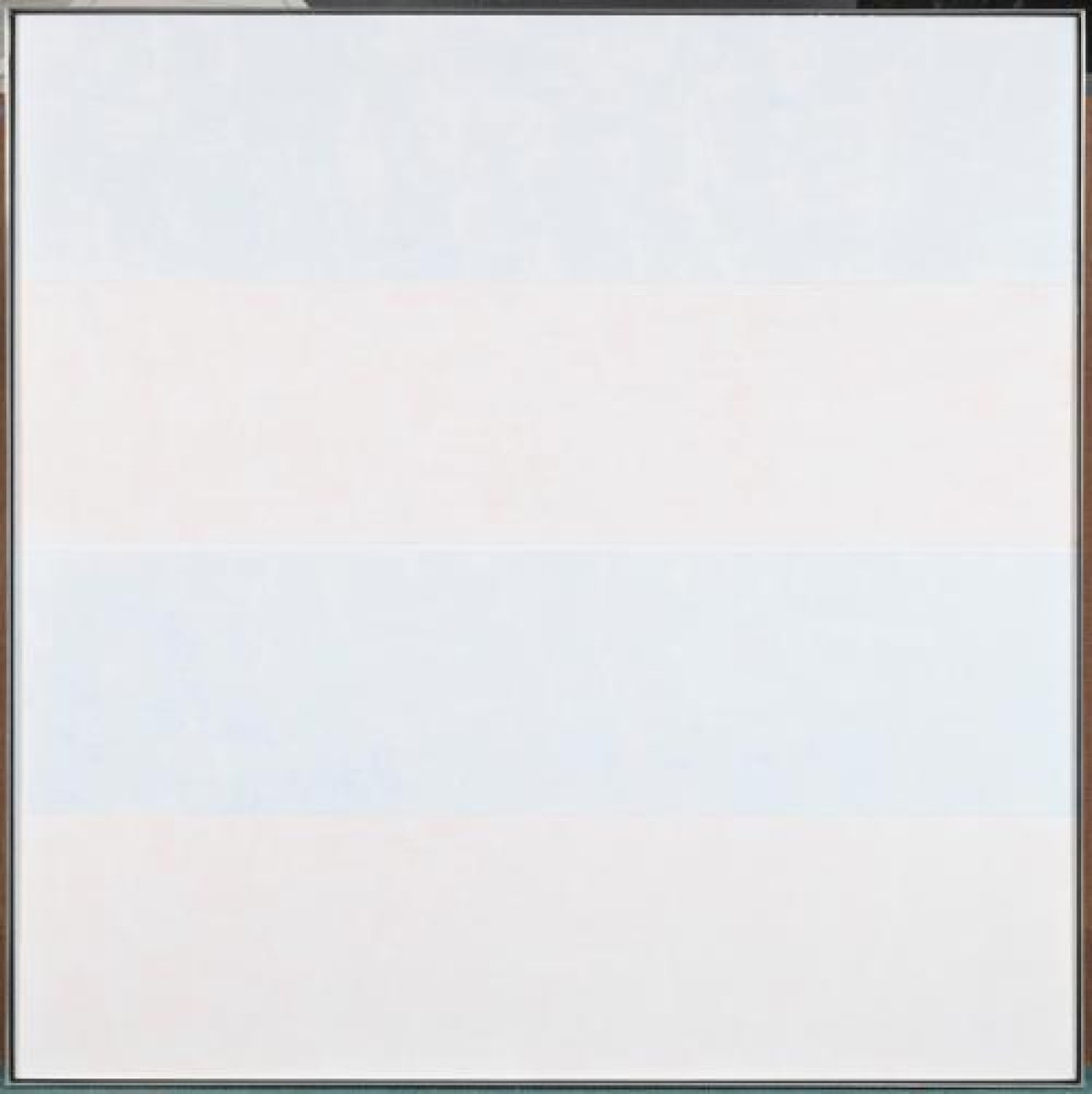Agnes Martin sought to create works whittled down to their most essential trait. Her art often features grids, lines, and subtle color palettes that evoke a sense of tranquility and contemplation. Martin was diagnosed with paranoid schizophrenia in her adulthood, and she experienced auditory hallucinations, depression, and catatonic trances. After receiving treatment in the 1960s, she described feeling a renewed sense of inner peace and artistic confidence, and she continued to make artwell into her eighties. Her work reflects her interest in Eastern philosophy, particularly Taoism, which influenced her approach to achieving harmony through simplicity.
As an Abstract Expressionist, Martin conveyed attitudes and emotions through her choices of colors and techniques. In a 1973 lecture, she stated, “The function of artwork […] is the renewal of moments of perfection.” In Untitled #18, the composition, symmetry, and subtlety of color relationships work together to invoke a mood of awe and reverence.
Agnes Martin (1912–2004), Untitled #18. Acrylic and graphite on canvas, 1995. 60 x 60 in. (152.4 x 152.4 cm). Gift of David and Georgia Welles, 2013.164. On view in the Wolfe Gallery.
